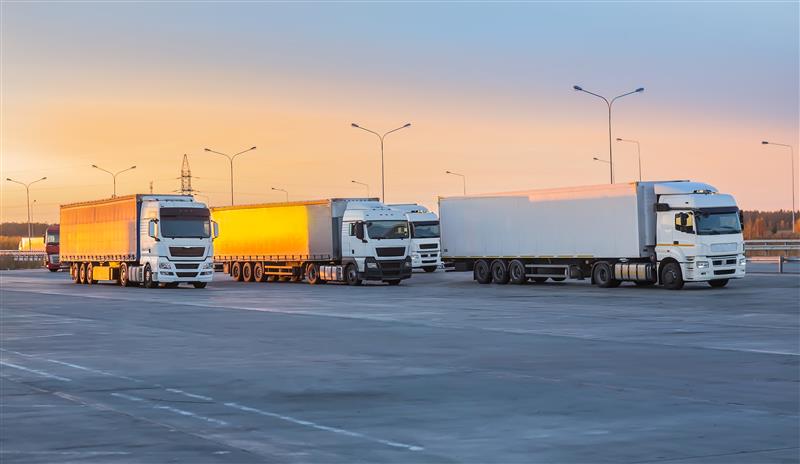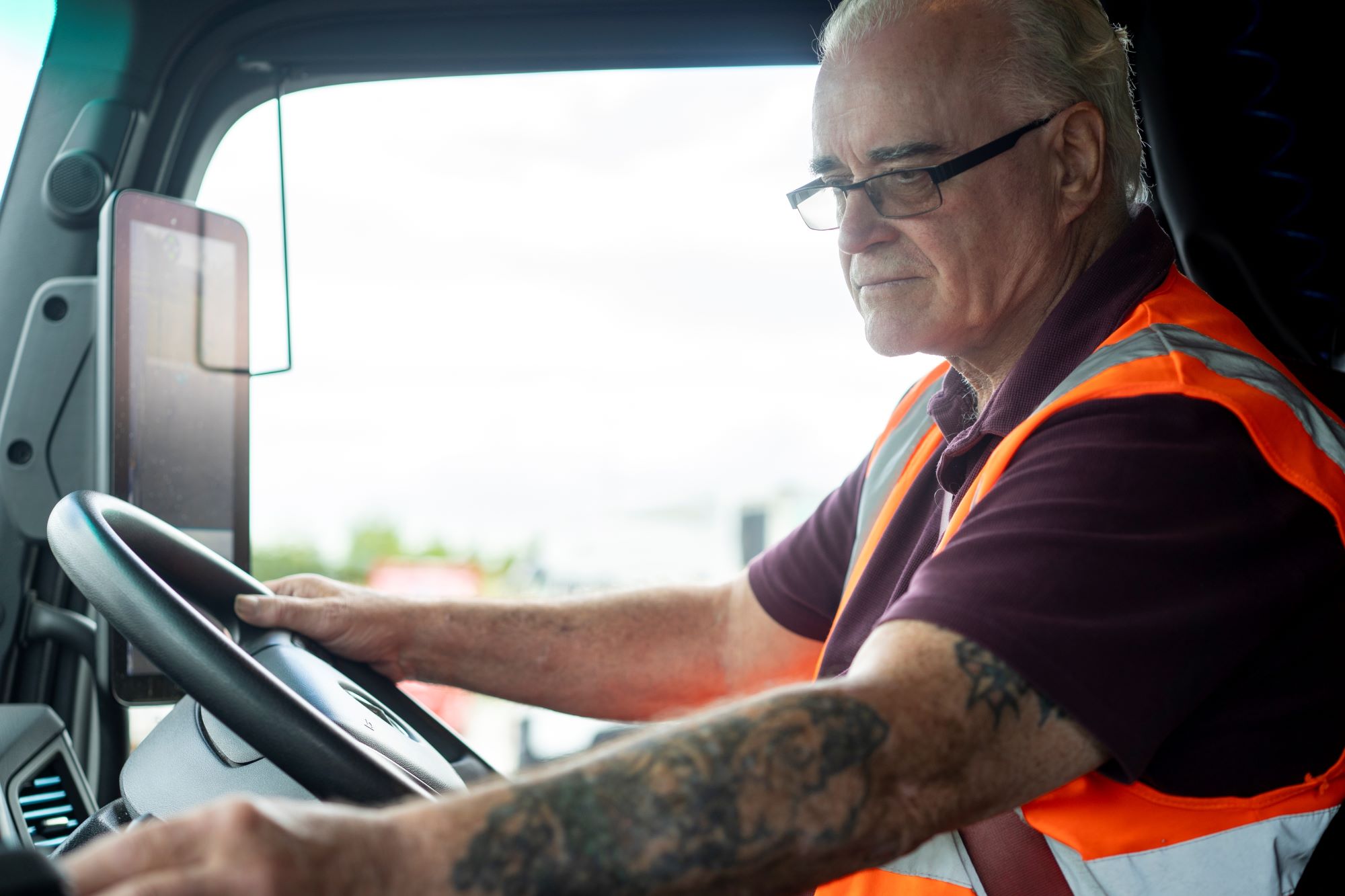
Guest
Ar sunkvežimiai Europoje gali važiuoti sekmadieniais?
Sukurta: 23-12-2024
•
Atnaujinta: 23-12-2024
Norint įveikti sekmadieninius draudimus vairuoti sunkvežimius Europoje, reikia išsamiai išmanyti konkrečios šalies taisykles, sezoninius pokyčius ir veiksmingas strategijas. Investuodamos į kruopštų maršrutų planavimą, nuolatinį informavimą, veiklos optimizavimą ir naudodamosi technologijomis, automobilių parko įmonės gali sušvelninti šių apribojimų poveikį.
Šiame tinklaraštyje analizuojame įvairiose Europos šalyse galiojančias skirtingas taisykles ir aiškinamės, kaip geriausiai prie jų prisitaikyti.
Konkrečios šalies taisyklės
Kiekviena šalis turi savo įstatymus, susijusius su draudimu vairuoti sekmadienį, ir jie gali labai skirtis.
Vokietija
Paskutinę savaitės dieną nuo 12 val. iki 22 val. draudžiama važiuoti sunkvežimiams, kurių masė viršija 7,5 tonos. Tačiau tai nebūtinai atgraso. Kombinuotojo transporto operacijoms gali būti taikomos specialios lengvatos: geležinkelių ir kelių transportas leidžiamas 200 km atstumu nuo pakrovimo ar iškrovimo stočių, o uosto ar kelių transportas - 150 km atstumu nuo uostų. Taip pat netaikomos išimtys gabenant konkrečius greitai gendančius krovinius, pavyzdžiui, šviežią pieną, pieno produktus, mėsą, žuvį, vaisius ir daržoves.
Be to, draudimas netaikomas tam tikroms transporto priemonėms ir operacijoms, pvz., avarinėms transporto priemonėms, kurios teikia gelbėjimo, vilkimo ar avarijų likvidavimo paslaugas.
Prancūzija
Šioje teritorijoje vairavimo apribojimai yra panašūs į taikomus Vokietijoje ir taikomi sunkvežimiams, kurių masė viršija 7,5 tonos. Šie apribojimai taikomi sekmadieniais ir valstybinių švenčių dienomis nuo 12 iki 22 val.
Be to, šeštadieniais ir dieną prieš valstybines šventes taikomi apribojimai - draudžiama važiuoti nuo 22 val. vakaro iki 24 val. ryto. O vasarą tam tikrais šeštadieniais draudžiama važiuoti nuo 7 iki 19 val.
Išimtys taikomos tam tikroms prekėms, įskaitant pieno ir mėsos produktus, taip pat greitosios pagalbos transporto priemonėms. Už šių draudimų pažeidimus asmenims ir įmonėms gali būti skiriamos didelės baudos, atitinkamai nuo 750 iki 3750 eurų.
Italija
Italijoje sekmadieniais ir valstybinių švenčių dienomis nuo 9 iki 22 val. sunkvežimiams draudžiama išvažiuoti į kelius. Verta paminėti, kad birželio, liepos, rugpjūčio ir rugsėjo mėnesiais draudimas prasideda anksčiau - 7 val. ryto, nors vis tiek baigiasi 22 val. vakaro.
Šalis taip pat taiko papildomus apribojimus vasaros mėnesiais. Liepos mėn. nuo 8 iki 16 val. šeštadieniais galioja embargas, o rugpjūtį - nuo 8 iki 22 val.
Nors tai yra bendrosios taisyklės, labai svarbu žinoti, kad tam tikruose maršrutuose gali būti vietinių pakeitimų arba laikinų apribojimų. Kaip ir Prancūzijoje bei Vokietijoje, tam tikros išimtys taip pat gali būti taikomos tam tikrų rūšių kroviniams ar skubios pagalbos tarnyboms.
Ispanija
Ispanijos atveju scenarijus yra daug sudėtingesnis. Yra daugybė regioninių draudimų, ypač Katalonijoje. Sunkvežimių vairavimo apribojimai gali keistis atsižvelgiant į vietos taisykles, valstybines šventes ir konkrečius maršrutus. Čia dirbantys sunkvežimių vairuotojai, norėdami užtikrinti, kad būtų laikomasi reikalavimų, turėtų susipažinti su vietos gairėmis.
Be sekmadienių ir švenčių dienomis taikomų draudimų, vasaros mėnesiais tam tikrais šeštadieniais taip pat taikomi apribojimai. Šie apribojimai paprastai taikomi nuo 8 iki 12 val. ryto, ypač liepos ir rugpjūčio mėnesiais, kai eismas būna intensyvesnis dėl poilsiautojų.
Kitos šalys
Kalbant apie kitas Europos šalis, daugelyje jų taip pat galioja draudimas vairuoti sekmadienį. Pavyzdžiui, Austrijoje nustatyta, kad sunkvežimiai, sveriantys daugiau kaip 7,5 tonos, negali važiuoti keliais sekmadieniais nuo 12 iki 22 val. Šveicarija laikosi panašios nuostatos - transporto priemonės, kurių masė viršija 3,5 tonos, negali važiuoti visą dieną.

Parko įmonių strategijos
Norint įveikti sekmadieninius sunkvežimių vairavimo apribojimus, labai svarbu veiksmingai planuoti maršrutą. Naudodamiesi pažangiomis technologijomis ir strateginiu mąstymu, automobilių parkų operatoriai gali optimizuoti savo procesus.
Naudokite GPS ir maršruto planavimo programinę įrangą
Šiuolaikinių GPS sistemų ir maršruto planavimo programinės įrangos naudojimas leidžia transporto parkams ir jų vairuotojams nustatyti efektyviausius reisus ir išvengti vietovių, kuriose draudžiama vairuoti. Šios priemonės gali realiuoju laiku pateikti naujausią informaciją apie kelių sąlygas, todėl sunkvežimių vairuotojai gali priimti pagrįstus sprendimus kelyje.
Apsvarstykite alternatyvius maršrutus
Dar viena idėja - ištirti skirtingus būdus, kaip nuvykti į reikiamą vietą. Nors gali kilti pagunda laikytis tiesiausio kelio, alternatyvūs maršrutai dažnai padeda sutaupyti laiko ir išvengti galimų baudų. Tokie aplinkkeliai gali būti šiek tiek ilgesni, tačiau gali padėti aplenkti vietoves, kuriose taikomi griežti embargai, ir taip užtikrinti sklandesnį darbą.
Planuokite vėlavimus
Atsižvelgiant į tai, kad dėl eismo spūsčių ar vairavimo embargų gali kilti nesklandumų, automobilių parko bendrovėms taip pat pravartu į savo tvarkaraščius įtraukti papildomo laiko. Aktyvus požiūris suteikia geresnes galimybes, kad pristatymai išliktų laiku - net ir susidūrus su netikėtais iššūkiais.
Informuokite
Taip pat svarbu nuolat gauti naujausią informaciją apie taisykles ir eismo sąlygas realiuoju laiku. Todėl pravartu naudotis specialiomis programėlėmis ir interneto svetainėmis - jose sunkvežimių vairuotojai gali tiesiogiai gauti naujausią informaciją apie uždarytus kelius, avarijas ir spūstis, kad galėtų koreguoti maršrutus ir išvengti vėlavimų.
Daugelis transporto asociacijų ir logistikos paslaugų teikėjų siūlo eismo perspėjimų prenumeratos paslaugas. Užsiprenumeravę šiuos pranešimus, transporto priemonių parko operatoriai gali gauti informaciją apie bet kokius vairavimo taisyklių pakeitimus ir užtikrinti, kad jų būtų laikomasi.
Technologijų panaudojimas
Technologijų naudojimas gali padidinti veiklos efektyvumą ir atitiktį vairavimo laiko taisyklėms.
Telematikos sistemos leidžia automobilių parkų bendrovėms stebėti transporto priemonių buvimo vietą, degalų sąnaudas ir vairuotojų elgesį. Duomenys gali būti neįkainojami optimizuojant maršrutus. Be to, skaitmeninių žurnalų tvarkymas supaprastina įrašų vedimą, o audito atveju tai bus svarbūs dokumentai.
Ne mažiau svarbi yra technologija, kuri supaprastina mokėjimus, ir čia gali padėti SNAP.
Užsiregistruokite į SNAP
Nesvarbu, ar ieškote saugios automobilių stovėjimo aikštelės, sunkvežimių plovyklos, ar kitų paslaugų savo automobilių parkams, mūsų sprendimai leidžia už jas atsiskaityti daug patogiau. Pasidomėkite, ką SNAP gali jums pasiūlyti šiandien.



